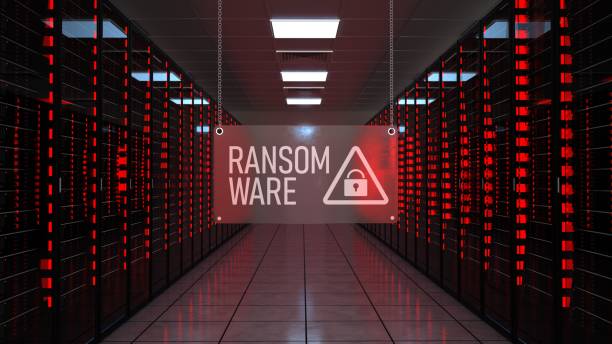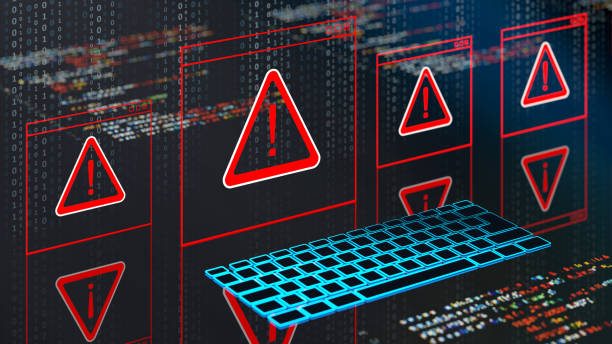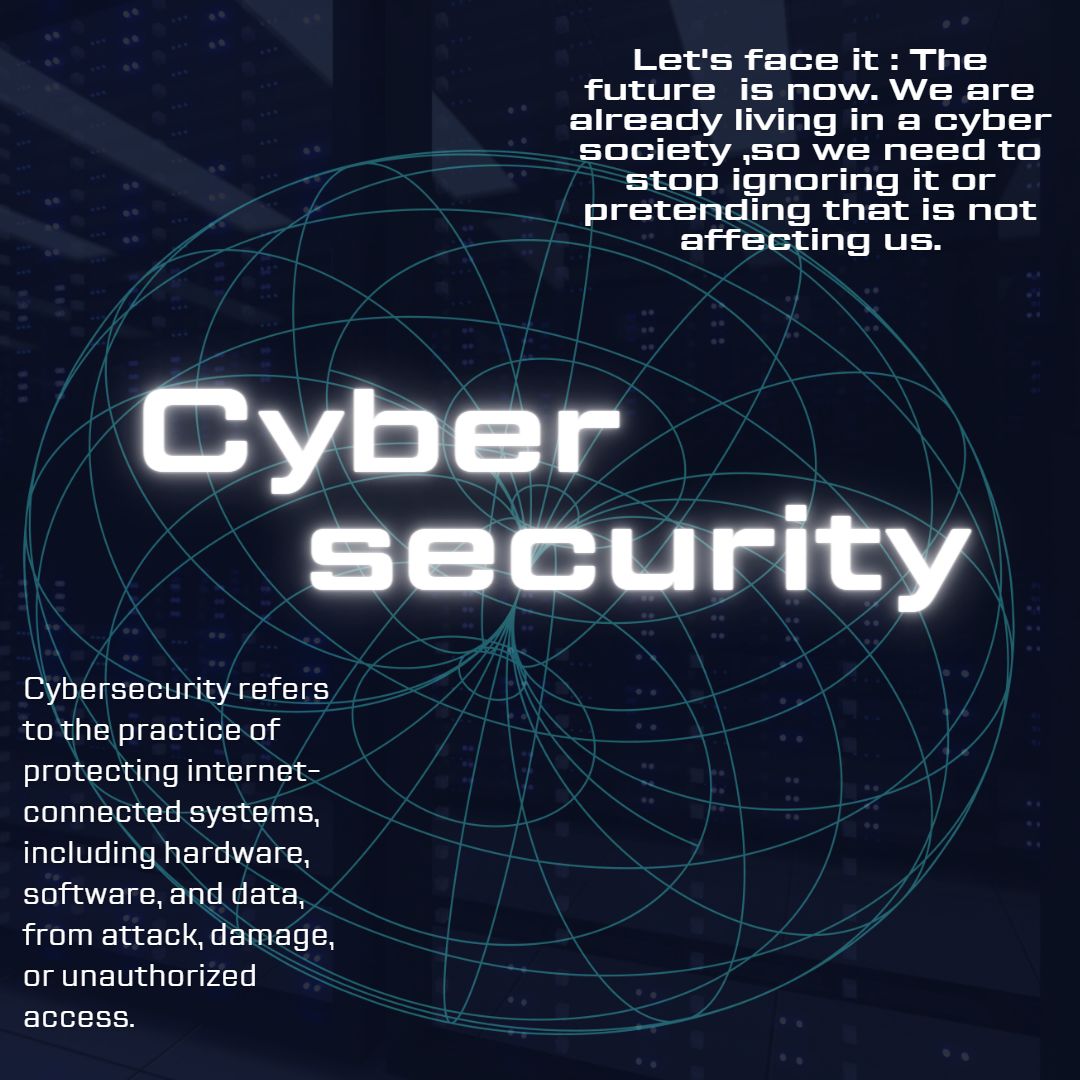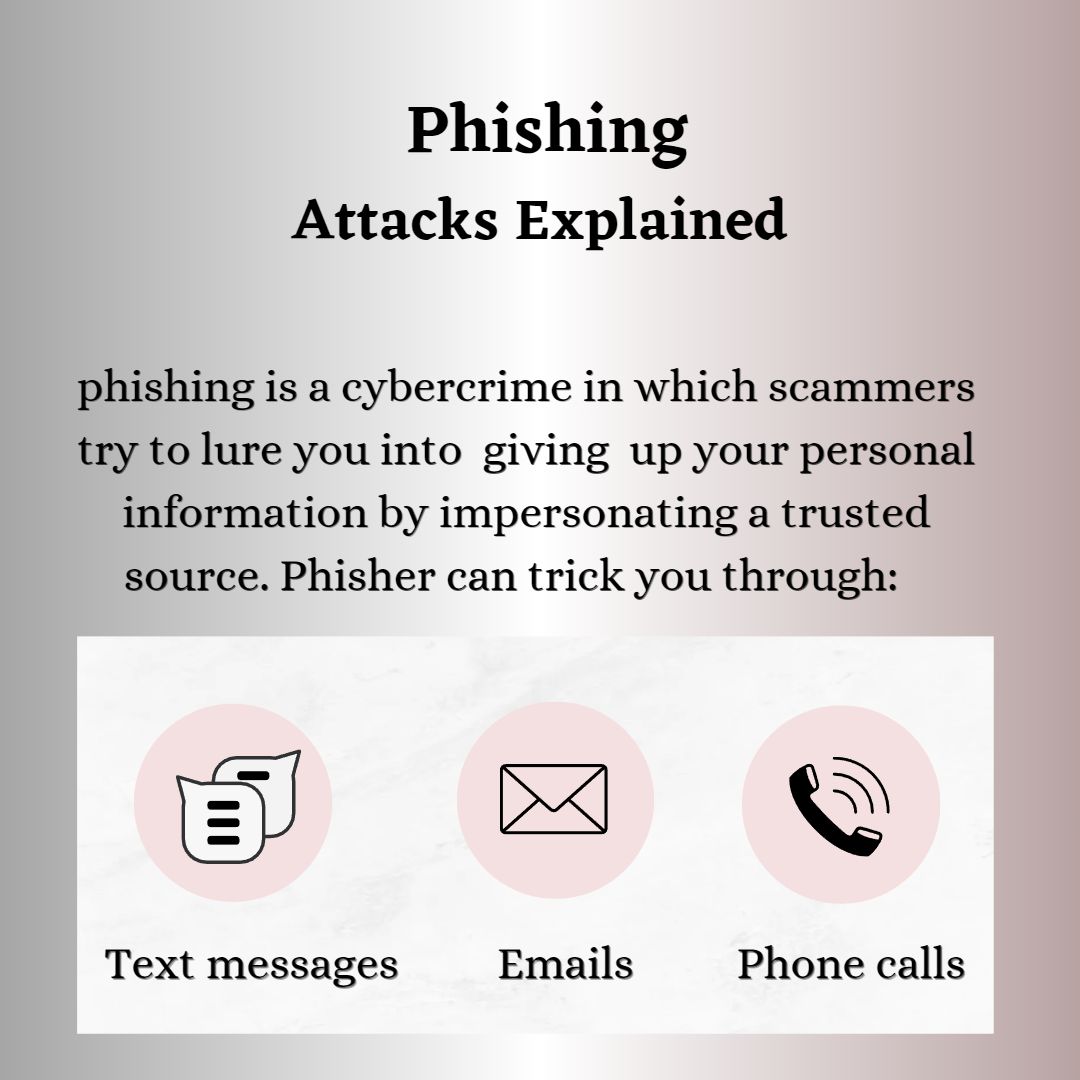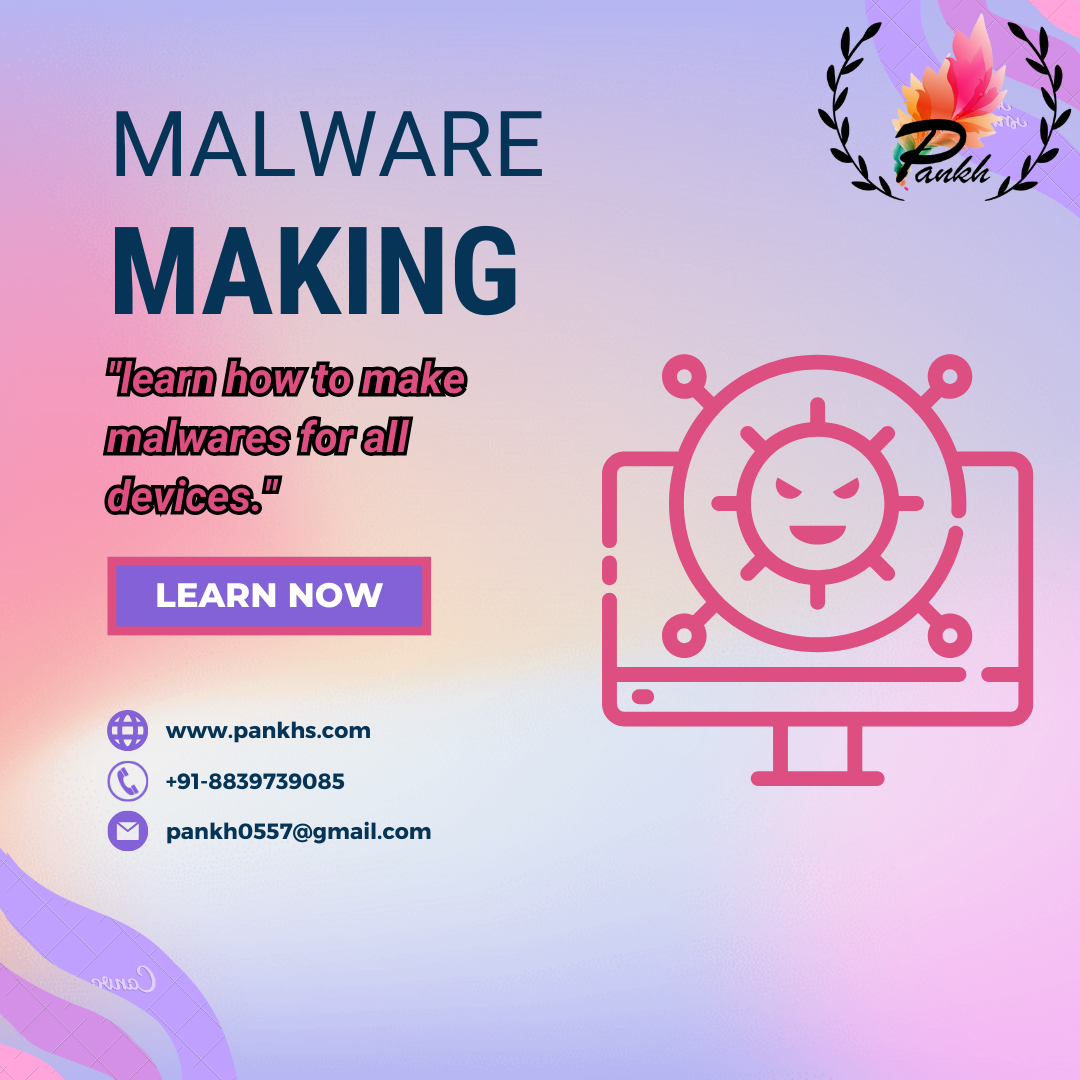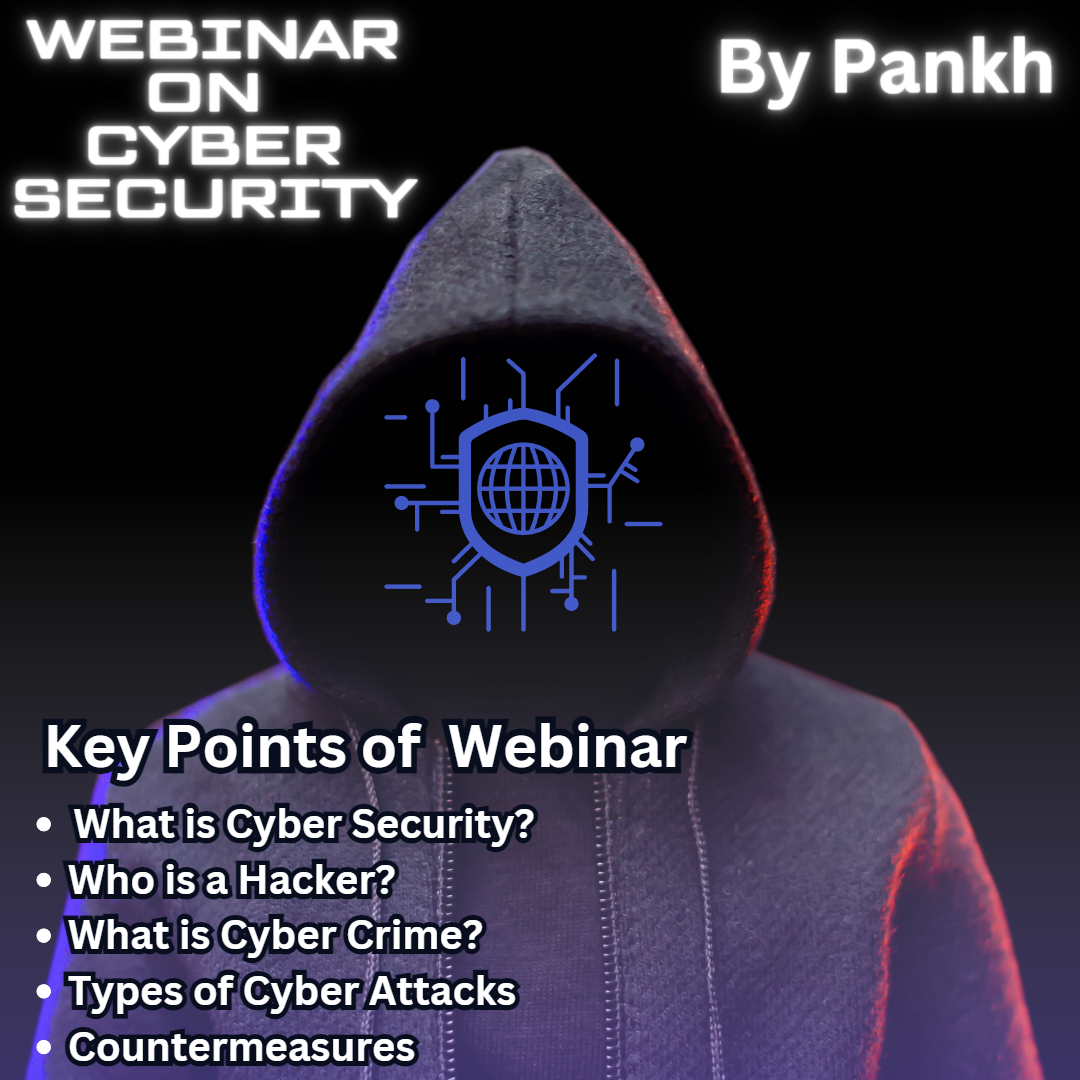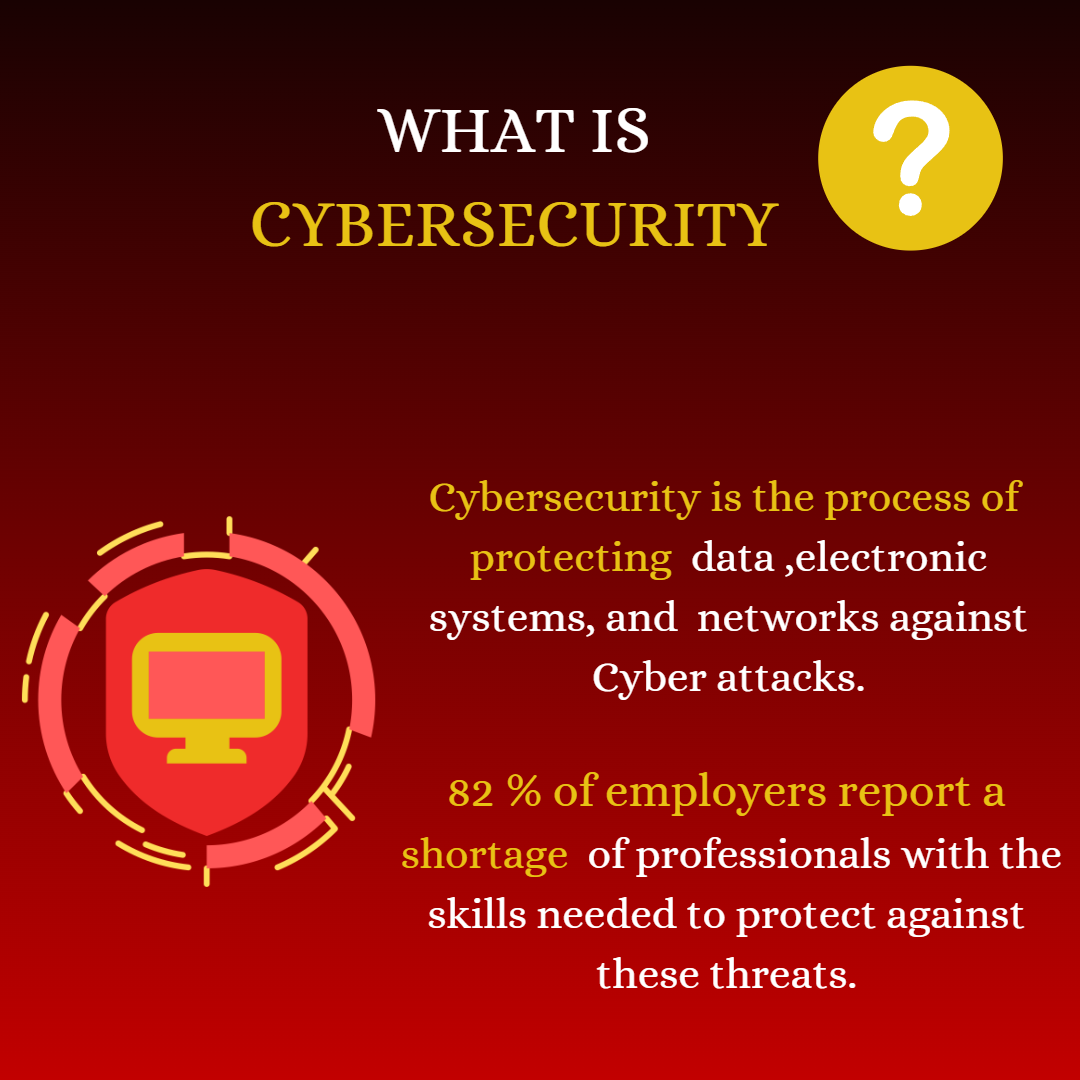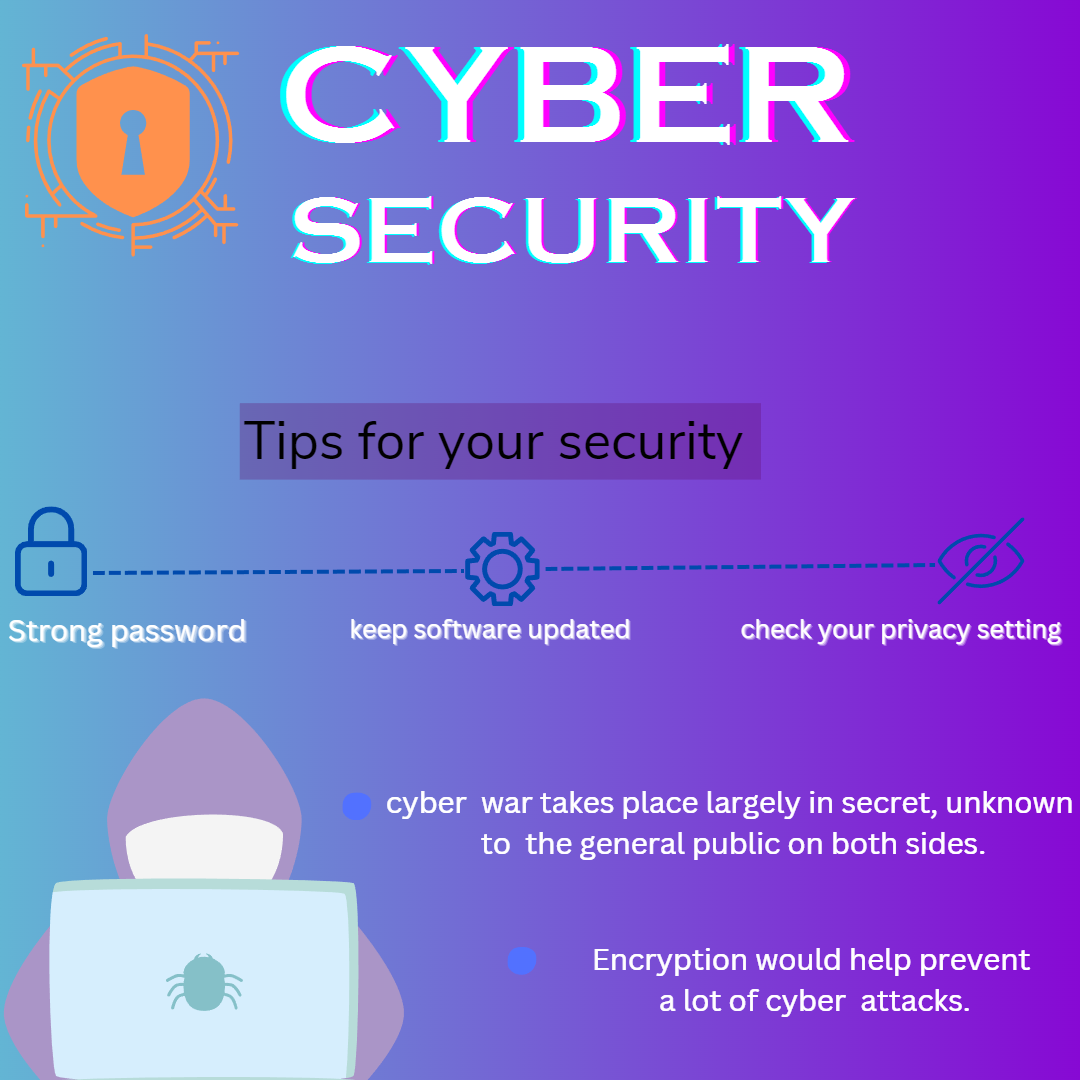Cyber Security Full Course
Cybersecurity is the practice of protecting systems, networks, and data from cyberattacks, ensuring the confidentiality, integrity, and availability of information. As digital threats evolve, it’s essential to understand various concepts, techniques, and tools used to secure IT environments.
Introduction to Cybersecurity: This involves understanding the core goals of cybersecurity (confidentiality, integrity, availability) and the different types of cyber threats, such as malware, phishing, and ransomware.
Networking Fundamentals: Networks form the backbone of the internet, making it crucial to understand networking protocols (TCP/IP), IP addressing, routing, and network devices like firewalls and switches. These are foundational to building secure infrastructures.
Cryptography Basics: Cryptography ensures secure communication by encrypting and decrypting data. It includes symmetric and asymmetric encryption, hashing, and digital signatures, providing essential security for sensitive data transfer over the internet.
Network Security: Protecting networks involves the use of firewalls, intrusion detection/prevention systems (IDS/IPS), VPNs, and secure wireless communication. These tools and techniques are key to defending networks from unauthorized access and attacks.
Operating System Security: Both Windows and Linux systems require hardening techniques like setting strong permissions, disabling unnecessary services, and applying regular updates to minimize vulnerabilities.
Web Application Security: Web applications are prone to attacks like SQL injection and cross-site scripting (XSS). OWASP’s Top 10 vulnerabilities and secure coding practices help developers create more resilient applications.
Cyber Threats and Attack Vectors: Common attack methods include malware, phishing, denial-of-service (DoS), and social engineering. Understanding these threats helps in implementing preventive measures and responding effectively to incidents.
Penetration Testing and Ethical Hacking: Ethical hackers simulate attacks to identify vulnerabilities in systems. Tools like Kali Linux, Metasploit, and Nmap are used in penetration testing to find weaknesses before malicious hackers exploit them.
Incident Response and Management: A strong incident response strategy ensures that organizations are prepared for cyber incidents. This includes detection, containment, eradication, and recovery, followed by digital forensics to analyze the attack.
Cloud Security: As organizations move to the cloud, securing cloud environments becomes critical. Cloud security involves managing access control, encryption, and compliance with data protection regulations, alongside securing services from providers like AWS or Azure.
Networking Basics
Networking basics are fundamental to cybersecurity as networks are the primary medium through which data is transmitted. Understanding how networks operate and the potential vulnerabilities they may possess is crucial for building secure systems. Here are some key points linking networking basics to cybersecurity:
OSI and TCP/IP Models: These models describe how data travels across networks. The OSI model breaks down communication into seven layers, while the TCP/IP model focuses on four. Each layer has potential security vulnerabilities, such as attacks targeting the transport layer (e.g., TCP SYN Flood) or the network layer (e.g., IP Spoofing).
IP Addressing and Subnetting: Proper configuration of IP addresses and subnets ensures that traffic is efficiently routed through the network while minimizing exposure to external threats. Misconfigured IP ranges or improper subnetting can lead to unauthorized access or data leaks.
Common Network Devices: Devices such as routers, switches, and firewalls play critical roles in managing and securing network traffic. Properly configuring firewalls to allow or block traffic is a key aspect of maintaining network security, preventing unauthorized access to sensitive areas of a network.
Network Protocols and Security: Protocols like HTTP, HTTPS, DNS, and FTP facilitate communication between devices. However, these protocols can be targeted by attackers to eavesdrop or intercept data. Secure alternatives, such as HTTPS (using TLS encryption), help mitigate risks associated with plain-text protocols.
Virtual Private Networks (VPNs): VPNs create secure, encrypted tunnels for data to travel between remote users and private networks, safeguarding sensitive information from being exposed to potential attackers. A misconfigured VPN can still pose risks if it doesn’t employ strong encryption.
Wireless Network Security: Wireless networks introduce unique challenges, such as weak encryption protocols (WEP) or vulnerable setups (default credentials). Ensuring that wireless networks use robust security protocols like WPA2 is essential to avoid unauthorized access.
Network Intrusion Detection and Prevention Systems (IDS/IPS): IDS/IPS monitor network traffic for signs of malicious activity. They are critical for identifying and stopping intrusions before they result in significant damage. Properly deploying and configuring these systems helps maintain the overall security of a network.

A Cybersecurity course is designed to equip individuals with the knowledge and skills needed to protect digital systems, networks, and data from cyber threats. It covers a wide range of topics from basic concepts to advanced techniques in cybersecurity. Whether you’re a beginner or looking to enhance your cybersecurity expertise, this course offers practical and theoretical insights into various security mechanisms and how they are applied in real-world scenarios.
Fundamentals of Cryptography
Fundamentals of Cryptography play a crucial role in the field of cybersecurity, as cryptography is the science of securing communication and ensuring data integrity, confidentiality, and authenticity. In today’s digital age, the protection of sensitive data is essential, and cryptography provides the tools and techniques to achieve that. It is used in many security protocols, including SSL/TLS for web security, encrypted messaging, and secure file transfers.
One of the key components of cryptography is encryption, the process of converting plain text into unreadable ciphertext. This ensures that even if unauthorized users gain access to the data, they cannot understand it without the decryption key. There are two types of encryption: symmetric and asymmetric. Symmetric encryption uses a single key for both encryption and decryption, while asymmetric encryption uses a pair of keys – a public key for encryption and a private key for decryption.
At Pankh, we offer in-depth cybersecurity training, where students learn both symmetric and asymmetric encryption, including widely-used algorithms such as AES (Advanced Encryption Standard) and RSA (Rivest-Shamir-Adleman) . This knowledge is critical for securing everything from personal data to enterprise-level communication.
Hashing is another essential cryptographic function covered in our training. Hashing converts data into a fixed-length string of characters, typically used to verify the integrity of data. A common use case is in storing passwords, where a hash of the password is stored instead of the password itself. Cryptographic hash functions like SHA-256 ensure that even a small change in the input data results in a completely different hash, making it a key component in securing data.
In the context of cybersecurity, digital signatures provide a way to verify the authenticity and integrity of a message or document. Digital signatures use asymmetric cryptography, where a sender’s private key is used to sign the data, and the recipient can verify it using the sender’s public key. This prevents tampering and guarantees that the message comes from a trusted source. Pankh’s cybersecurity training programs cover digital signatures, teaching how they are implemented in real-world applications like emails, software distribution, and legal documents .
A major aspect of modern cryptography is Public Key Infrastructure (PKI), which is essential for managing encryption keys and digital certificates in an organization. PKI helps establish trust between parties by providing a framework for the issuance, management, and validation of digital certificates. Pankh provides cybersecurity consultancy services to organizations, assisting them in setting up and managing PKI systems, ensuring secure communication and data exchange across their networks .
SSL/TLS protocols, which secure web communications, rely heavily on cryptography. These protocols ensure that any data transmitted between a web browser and a server is encrypted, protecting it from eavesdropping and tampering. Our cybersecurity training at Pankh includes practical labs on setting up SSL certificates and configuring secure web servers, ensuring participants understand how to implement SSL/TLS for secure browsing .
Blockchain technology also heavily relies on cryptographic principles, particularly public key cryptography, to secure transactions and data within decentralized networks. While blockchain is most commonly associated with cryptocurrencies, its potential applications in other industries, such as healthcare and finance, are vast. At Pankh, our cybersecurity consultancy services offer guidance on the implementation of cryptographic solutions for blockchain and other advanced technologies .
By mastering the fundamentals of cryptography, cybersecurity professionals can implement robust security measures that protect against data breaches, unauthorized access, and other cyber threats. Pankh’s training programs ensure that learners not only understand the theory behind cryptographic techniques but can also apply them to real-world scenarios . Through both training and consultancy, we help individuals and organizations safeguard their digital assets and ensure compliance with security standards.
Network Security
Network security is a critical component of cybersecurity, focusing on protecting the integrity, confidentiality, and availability of data as it moves through a network. As cyber threats continue to evolve, securing network infrastructures against attacks has become more complex, requiring a combination of tools, protocols, and best practices. Network security aims to safeguard systems from unauthorized access, data theft, and attacks like Distributed Denial of Service (DDoS).
One of the foundational elements of network security is the use of firewalls. Firewalls act as the first line of defense, filtering incoming and outgoing traffic based on a set of security rules. They prevent unauthorized access to or from a private network. Firewalls can be either hardware- or software-based and are essential for protecting network perimeters. At Pankh, our cybersecurity training programs cover firewall configuration and management, teaching participants how to design robust security rules to protect networks from external threats.
Another vital tool in network security is the Intrusion Detection and Prevention System (IDS/IPS), which monitors network traffic for suspicious activity and can either alert the user (IDS) or take immediate action (IPS) to block the malicious traffic. These systems play a key role in detecting and mitigating attacks in real time. Pankh provides cybersecurity consultancy services that assist organizations in setting up and optimizing IDS/IPS solutions to bolster their defense strategies .
Virtual Private Networks (VPNs) are widely used to secure remote access to corporate networks. VPNs encrypt the data being transmitted between a remote user and the company’s network, ensuring that sensitive information, such as login credentials or financial data, is not intercepted by attackers. With the rise of remote work, the importance of securing VPNs has become more pronounced. Pankh’s cybersecurity training includes practical labs where participants learn how to configure and secure VPNs for safe remote access .
Network segmentation is another crucial aspect of network security. It involves dividing a network into smaller segments, each isolated from the others, to reduce the impact of a potential breach. If one segment is compromised, the attacker cannot easily move laterally across the entire network. Proper segmentation also allows for more targeted security controls. Pankh’s consultancy services help organizations implement network segmentation strategies, minimizing the risk of large-scale attacks .
One of the most challenging aspects of network security is managing wireless networks. Wireless networks are more susceptible to attacks, such as eavesdropping and unauthorized access, especially if weak encryption methods are used. Using strong encryption protocols, such as WPA2 or WPA3, and regularly updating wireless infrastructure is essential to prevent unauthorized users from accessing the network. Pankh provides in-depth cybersecurity training, covering wireless security measures and best practices to ensure secure, reliable wireless communication .
As organizations increasingly rely on the cloud, securing cloud-based networks has become a priority. Cloud providers often use shared infrastructure, which introduces unique security challenges. Encryption, access controls, and constant monitoring are essential to maintaining cloud network security. Pankh’s cybersecurity consultancy services offer guidance on implementing secure cloud architectures and ensuring compliance with industry standards, helping businesses protect their cloud environments .
Finally, security monitoring and logging are critical for maintaining ongoing network security. By continuously monitoring network traffic and reviewing logs for unusual activity, organizations can detect potential breaches early and respond quickly. Security Information and Event Management (SIEM) tools help collect and analyze this data, providing actionable insights for preventing cyber incidents. Pankh’s cybersecurity training programs teach participants how to use these tools to monitor, detect, and respond to network security threats effectively .
By understanding and implementing the principles of network security, organizations can build strong defenses against cyberattacks. At Pankh, we offer both cybersecurity training and consultancy services to ensure individuals and organizations are equipped to face the ever-growing challenges in securing their networks and protecting their valuable data
A cybersecurity course provides comprehensive training in safeguarding digital systems, networks, and data from cyber threats. It covers key areas such as ethical hacking, network security, cryptography, incident response, and secure coding. Participants learn about identifying and mitigating vulnerabilities, protecting sensitive information, and defending against various types of cyberattacks, including malware, phishing, and ransomware. Practical labs and hands-on exercises help learners apply theoretical knowledge in real-world scenarios. Courses also prepare individuals for industry-recognized certifications like CISSP, CEH, and CompTIA Security+. At Pankh, we offer cybersecurity training programs designed to equip professionals with the latest skills, while also providing cybersecurity consultancy services to help organizations strengthen their security frameworks.

Operating System Security
Operating system (OS) security is a vital aspect of cybersecurity, focusing on safeguarding the core software that runs devices and systems. Every operating system, whether it’s Windows, macOS, or Linux, is a potential target for cyberattacks. Securing an operating system involves configuring it to reduce vulnerabilities, applying patches, and implementing protective measures like access controls and encryption to defend against malicious activities.
One of the primary strategies in OS security is hardening the system. This involves disabling unnecessary services, limiting user privileges, and configuring strong authentication methods. Hardening minimizes the attack surface, making it harder for cybercriminals to exploit weaknesses. At Pankh, our cybersecurity training programs provide in-depth knowledge on hardening different operating systems, helping learners implement best practices to secure their environments.
Another critical aspect of OS security is patch management. Regular updates and security patches from OS vendors address vulnerabilities that hackers could exploit. Organizations must have an efficient process to apply these patches without disrupting their operations. Pankh provides cybersecurity consultancy services that help businesses establish robust patch management policies, ensuring systems remain up to date and protected against known vulnerabilities.
User account management is also central to OS security. By controlling who has access to the system and at what level (administrator, standard user, guest), organizations can significantly reduce the risk of insider threats and unauthorized access. Strong password policies, multi-factor authentication (MFA), and least privilege principles are essential to secure user accounts. Pankh’s training equips cybersecurity professionals with the skills needed to design and manage secure user access controls .
For Linux systems, implementing security modules like SELinux (Security-Enhanced Linux) and AppArmor is a powerful way to enforce security policies that restrict what programs and users can do. These tools add an extra layer of protection by controlling access to system resources. Pankh’s consultancy services offer guidance on configuring and optimizing these security modules to meet specific organizational needs .
Antivirus and endpoint protection are crucial for defending operating systems from malware infections, which can cause significant damage to both individual systems and entire networks. Installing reputable antivirus software and employing endpoint protection solutions help detect and block malicious files before they can spread. Pankh’s cybersecurity consultancy offers tailored advice on choosing and implementing the right endpoint protection tools for various operating systems, ensuring comprehensive security .
Monitoring and logging are essential in detecting unusual or malicious activity within an OS. By keeping track of system events, login attempts, and application behavior, organizations can quickly identify and respond to potential security incidents. Tools like Security Information and Event Management (SIEM) systems help in aggregating logs and providing real-time alerts. Pankh’s cybersecurity training programs include detailed modules on using monitoring tools and creating effective logging strategies to maintain OS security .
Finally, encryption plays a significant role in protecting sensitive data stored on an operating system. Encrypting files, folders, or entire drives ensures that even if attackers gain access to a system, they cannot read the data without the encryption key. Techniques like full disk encryption and file-level encryption are covered in Pankh’s cybersecurity training, ensuring participants are equipped to protect sensitive information in various environments .
By mastering the principles of operating system security, organizations can defend their core systems from a wide range of cyber threats. Pankh’s cybersecurity training and consultancy services provide the knowledge and support necessary to implement strong OS security measures, ensuring that both individuals and organizations are well-prepared to protect their digital assets .
Web Application Security
Web application security is a crucial component of cybersecurity, focusing on protecting web applications from various threats and vulnerabilities. As web applications become more prevalent, they become prime targets for cyberattacks, making it essential to ensure their security. These applications often handle sensitive data, such as personal information and financial records, making them attractive to attackers looking to exploit vulnerabilities.
One of the most common vulnerabilities in web applications is SQL injection, where attackers inject malicious code into a query to manipulate databases. This can result in unauthorized access to data or even the deletion of entire databases. Protecting against SQL injection involves using prepared statements and parameterized queries. At Pankh, our cybersecurity training programs cover secure coding practices to prevent such vulnerabilities and teach developers how to build secure web applications from the ground up.
Another significant threat is Cross-Site Scripting (XSS), which occurs when attackers inject malicious scripts into web pages viewed by other users. XSS can lead to the theft of session cookies, allowing attackers to impersonate users or perform unauthorized actions. Proper input validation and output encoding are essential to prevent XSS attacks. Pankh provides cybersecurity consultancy services that help organizations identify and mitigate XSS risks, ensuring the safety of their web applications.
Cross-Site Request Forgery (CSRF) is another common attack that tricks users into performing actions they did not intend, such as transferring funds or changing account settings. CSRF protection involves implementing security tokens and validating user inputs. Pankh’s cybersecurity training includes hands-on labs that teach participants how to defend against CSRF and other client-side attacks, ensuring robust web application security .
Ensuring authentication and session management security is critical in web applications. Weak authentication mechanisms or improper session handling can allow attackers to hijack user sessions or gain unauthorized access to accounts. Implementing multi-factor authentication (MFA), using secure cookies, and enforcing session timeouts are effective measures. Pankh’s cybersecurity consultancy assists organizations in setting up secure authentication systems and session management protocols to minimize the risk of account compromise .
Input validation and output encoding are essential techniques for protecting web applications from a wide range of attacks. Input validation ensures that user-provided data is properly checked for harmful content before being processed, while output encoding ensures that any data displayed back to users is safely formatted. These practices help prevent attacks like XSS, SQL injection, and buffer overflows. Pankh’s cybersecurity training teaches developers how to implement these critical defenses, making web applications more resilient to attacks .
The OWASP Top 10 is a widely recognized list of the most critical web application security risks. This list includes common vulnerabilities like broken access control, security misconfigurations, and sensitive data exposure. Addressing these issues is vital for building secure web applications. At Pankh, our cybersecurity consultancy services help organizations assess their web applications against the OWASP Top 10, ensuring that they are well-protected against the most common threats .
Web application firewalls (WAFs) are another important tool in defending web applications. WAFs monitor, filter, and block HTTP traffic to and from web applications, protecting against various attacks such as SQL injection, XSS, and DDoS attacks. Pankh’s cybersecurity consultancy provides expert advice on deploying and configuring WAFs to enhance web application security and ensure comprehensive protection from external threats .
By focusing on web application security, organizations can significantly reduce their exposure to cyberattacks that target online systems. At Pankh, we offer both cybersecurity training and consultancy services to ensure that developers, security teams, and businesses are equipped to protect their web applications from the ever-evolving threat landscape .
Cyber Threats and Attack Vectors
**Cyber threats and attack vectors** are central to understanding **cybersecurity**, as they represent the various ways in which attackers exploit vulnerabilities to compromise systems, steal data, or disrupt services. As technology advances, so do the tactics used by cybercriminals, making it essential to stay informed about the latest threats and how to defend against them. Attack vectors are the routes or methods that attackers use to breach a network or system, and they can range from phishing emails to sophisticated malware.
One of the most common attack vectors is **phishing**, where attackers send fraudulent emails designed to trick individuals into revealing sensitive information such as login credentials or credit card numbers. Phishing attacks are often the starting point for more significant breaches, like account takeovers or ransomware attacks. At **Pankh**, our **cybersecurity training programs** teach individuals and organizations how to recognize phishing attempts and implement protective measures, such as email filtering and employee awareness training.
**Malware** is another prevalent threat, encompassing a variety of malicious software like viruses, worms, Trojans, and ransomware. Once installed on a victim’s system, malware can cause data breaches, disable networks, or hold data hostage, as seen in recent ransomware attacks. **Pankh provides cybersecurity consultancy services** to help organizations implement robust malware defenses, including antivirus software, endpoint detection and response (EDR), and continuous monitoring to detect malicious activity early.
**Denial of Service (DoS) and Distributed Denial of Service (DDoS)** attacks aim to overwhelm a system, network, or service with a flood of traffic, rendering it unavailable to users. These attacks can cause significant financial and operational damage, particularly for businesses reliant on online services. **Pankh’s cybersecurity training** includes modules on detecting and mitigating DoS and DDoS attacks, ensuring participants understand how to safeguard their networks from these disruptive threats .
Another sophisticated attack vector is **Advanced Persistent Threats (APTs)**, where attackers gain unauthorized access to a network and remain undetected for extended periods. APTs often target high-value data, such as intellectual property or sensitive financial information. **Pankh provides consultancy services** to organizations on building layered security defenses, including network segmentation, monitoring, and incident response planning, to protect against APTs.
**Insider threats** are also a major concern for organizations, as they involve malicious actions from individuals within the company, such as employees, contractors, or business partners. Insider threats can result from intentional sabotage or unintentional mistakes, such as accidentally leaking sensitive data. Our **cybersecurity training at Pankh** addresses how to detect and mitigate insider threats by implementing strong access controls, monitoring, and fostering a culture of security awareness .
The rise of the **Internet of Things (IoT)** has introduced new attack vectors, as IoT devices often lack robust security features, making them easy targets for cybercriminals. Compromised IoT devices can be used in botnets for DDoS attacks or serve as entry points to broader network attacks. **Pankh’s cybersecurity consultancy services** offer expert guidance on securing IoT networks, from device configuration to network segmentation and monitoring .
Lastly, **social engineering** is an increasingly common attack vector, where cybercriminals manipulate individuals into divulging confidential information. Social engineering attacks often bypass technical security measures by exploiting human psychology, making training and awareness critical. At **Pankh**, we provide **cybersecurity training** that focuses on educating employees about social engineering tactics and building a security-first mindset to defend against these deceptive attacks .
Understanding **cyber threats and attack vectors** is essential for building strong defenses in today’s digital landscape. **Pankh’s cybersecurity training and consultancy services** help organizations and individuals recognize, respond to, and mitigate these threats, ensuring they are prepared to protect their assets from a wide range of cyberattacks .
Penetration Testing and Ethical Hacking
**Penetration testing and ethical hacking** are critical components of **cybersecurity**, focused on identifying and addressing vulnerabilities before malicious attackers can exploit them. These practices involve simulating attacks on systems, networks, and applications to uncover security weaknesses and improve defenses.
1. **Purpose and Scope**: Penetration testing aims to evaluate the security of a system by mimicking the tactics of real-world attackers. This involves conducting controlled attacks to identify vulnerabilities, misconfigurations, and weaknesses in security controls. **Pankh’s cybersecurity training programs** include comprehensive modules on penetration testing methodologies and best practices, providing hands-on experience with real-world scenarios.
2. **Types of Penetration Testing**: Various types of penetration tests include network, web application, and social engineering tests. Each type focuses on different aspects of security, such as network infrastructure, application code, or human factors. **Pankh’s consultancy services** help organizations determine the appropriate type of testing based on their specific security needs and objectives.
3. **Ethical Hacking Tools**: Ethical hackers use a range of tools to conduct penetration tests, including scanners like Nmap and vulnerability assessment tools like Nessus. These tools help identify potential security flaws and gather information about target systems. At **Pankh**, our **cybersecurity training** covers the use of these tools, ensuring that participants gain practical skills in using them effectively for security assessments.
4. **Testing Phases**: Penetration testing generally involves several phases, including planning, scanning, exploitation, and reporting. Each phase is crucial for uncovering vulnerabilities and assessing the effectiveness of security measures. **Pankh provides detailed training** on each phase of the penetration testing process, helping learners understand how to conduct thorough and systematic security assessments.
5. **Reporting and Remediation**: After completing a penetration test, ethical hackers produce detailed reports that outline the findings, including identified vulnerabilities and recommendations for remediation. This report is essential for organizations to address security issues and strengthen their defenses. **Pankh’s consultancy services** assist businesses in interpreting these reports and implementing recommended fixes to enhance their overall security posture.
6. **Legal and Ethical Considerations**: Ethical hacking must be conducted within legal boundaries and with proper authorization. Understanding the legal and ethical implications of penetration testing is critical to ensure compliance and avoid legal repercussions. **Pankh’s cybersecurity training** emphasizes the importance of adhering to legal and ethical standards while performing penetration tests.
7. **Continuous Improvement**: Penetration testing is not a one-time activity but should be part of an ongoing security strategy. Regular testing helps organizations stay ahead of emerging threats and continuously improve their security measures. **Pankh provides consultancy services** that include developing long-term penetration testing and security assessment plans to maintain a proactive security posture.
8. **Real-World Applications**: Penetration testing and ethical hacking are used by organizations to validate the effectiveness of their security controls, prepare for potential breaches, and comply with industry regulations. **Pankh’s cybersecurity training and consultancy services** offer tailored solutions to help organizations integrate penetration testing into their overall security strategy, ensuring robust protection against cyber threats.
By incorporating **penetration testing and ethical hacking** into their cybersecurity practices, organizations can proactively identify and address vulnerabilities, enhancing their overall security resilience. **Pankh’s training and consultancy** provide the expertise and tools needed to conduct effective security assessments and build stronger defenses against potential cyber threats.
Cybersecurity Certifications
Cybersecurity certifications are essential for professionals looking to validate their expertise and advance their careers in the field of cybersecurity. These certifications not only demonstrate proficiency in various cybersecurity domains but also help organizations ensure they have qualified individuals managing their security systems. Here’s an overview of key cybersecurity certifications and their significance:
1. Certified Information Systems Security Professional (CISSP): The CISSP certification, offered by (ISC)², is one of the most recognized credentials in the cybersecurity industry. It covers a broad range of security topics, including risk management, asset security, and network security. Achieving CISSP demonstrates a comprehensive understanding of cybersecurity practices and is often required for senior security roles. At Pankh, our cybersecurity training programs prepare individuals for the CISSP exam by covering all necessary domains and providing practical insights into security management and practices.
2. Certified Ethical Hacker (CEH): The CEH certification, provided by EC-Council, focuses on ethical hacking techniques and tools used to identify and address vulnerabilities in systems and networks. This certification is ideal for those interested in penetration testing and ethical hacking roles. Pankh’s cybersecurity training includes specialized courses for CEH, offering hands-on experience with ethical hacking tools and methodologies to prepare candidates for the certification exam.
3. CompTIA Security+: CompTIA Security+ is a foundational certification that covers essential cybersecurity concepts, including network security, threat management, and risk assessment. It is a popular choice for those new to the field or looking to build a solid foundation in cybersecurity. Pankh provides comprehensive training for CompTIA Security+, helping individuals understand core security principles and prepare for the certification exam.
4. Certified Information Security Manager (CISM): CISM, offered by ISACA, is designed for individuals in management or advisory roles, focusing on information security governance, risk management, and incident response. This certification is valuable for those looking to advance into managerial positions within cybersecurity. Pankh’s consultancy services assist organizations in understanding and implementing the best practices covered by CISM, ensuring their security management strategies are up to standard.
5. Certified Information Systems Auditor (CISA): The CISA certification, also provided by ISACA, focuses on auditing, control, and assurance of information systems. It is particularly useful for professionals involved in IT auditing and compliance. Pankh’s cybersecurity training programs cover the CISA domains, equipping candidates with the knowledge required to excel in auditing and ensuring that systems are secure and compliant with industry standards.
6. Certified Cloud Security Professional (CCSP): The CCSP certification, from (ISC)², addresses cloud security architecture, governance, and risk management. As cloud computing becomes increasingly prevalent, this certification is essential for professionals managing cloud security. Pankh offers specialized training for CCSP, providing insights into cloud security practices and preparing candidates for the certification exam.
7. Offensive Security Certified Professional (OSCP): OSCP, offered by Offensive Security, is a hands-on certification that tests penetration testing skills through a challenging practical exam. It is highly regarded in the field of ethical hacking and penetration testing. Pankh’s cybersecurity training includes advanced penetration testing courses designed to help individuals prepare for the OSCP exam by simulating real-world attack scenarios.
8. Certified Incident Handler (GCIH): The GCIH certification, from GIAC, focuses on incident handling and response. It covers techniques for detecting, responding to, and managing security incidents. This certification is valuable for those involved in incident response and cybersecurity operations. Pankh provides training on incident handling and response, preparing individuals for the GCIH exam and ensuring they are equipped to manage security incidents effectively.
9. Certified Forensic Examiner (GCFE): GCFE, also from GIAC, is geared towards professionals involved in digital forensics and investigations. It covers forensic techniques and tools used to analyze and recover data from digital devices. Pankh’s cybersecurity consultancy offers guidance on implementing forensic practices and tools, helping organizations handle and investigate digital incidents.
10. Certified Network Defense Architect (CNDA): The CNDA certification focuses on network defense strategies and architectures. It is ideal for professionals involved in designing and implementing secure network infrastructures. Pankh’s training programs cover network defense concepts and prepare candidates for the CNDA certification, ensuring they have the skills to create robust network security solutions.
Obtaining cybersecurity certifications helps professionals validate their skills and advance their careers while providing organizations with assurance that their security measures are managed by qualified individuals. Pankh’s training and consultancy services support individuals in preparing for these certifications and assist organizations in implementing effective security practices based on industry standards.
Hands-On Projects and Labs
- Setting up a Home Lab (Virtual Machines, Networking)
- Implementing Firewalls and IDS/IPS
- Conducting Vulnerability Assessments
- Simulating Attacks and Defense Strategies
- Real-World Case Studies of Cyber Incidents
Cybersecurity is a critical field dedicated to protecting digital systems, networks, and data from a wide range of cyber threats and attacks. As technology continues to advance, the importance of cybersecurity grows, necessitating robust strategies and practices to safeguard information and maintain the integrity of digital infrastructures.
1. Fundamentals of Cybersecurity: At its core, cybersecurity involves implementing measures to protect computer systems and networks from unauthorized access, attacks, and damage. This encompasses a range of practices, including encryption, access controls, and regular security assessments. Pankh provides comprehensive cybersecurity training, covering fundamental concepts and advanced techniques to ensure individuals and organizations are well-equipped to defend against cyber threats.
2. Types of Cyber Threats: Cyber threats come in various forms, including malware, phishing, ransomware, and denial of service attacks. Each type of threat targets different aspects of a system, from stealing sensitive information to disrupting services. Pankh’s consultancy services help organizations understand and mitigate these threats by implementing effective security measures and response strategies.
3. Network Security: Network security focuses on protecting the integrity, confidentiality, and availability of data as it travels across or is stored within a network. Key components include firewalls, intrusion detection systems, and secure network configurations. Pankh offers specialized training on network security to help professionals design and manage secure networks, as well as consultancy services to optimize network defenses against potential attacks.
4. Cryptography: Cryptography plays a vital role in cybersecurity by encrypting data to protect it from unauthorized access. This includes securing communications, data storage, and authentication processes. Pankh’s cybersecurity training programs cover cryptographic principles and their applications, ensuring that individuals understand how to implement encryption to safeguard sensitive information.
5. Incident Response: Effective incident response is crucial for managing and mitigating the impact of security breaches. This involves detecting, analyzing, and responding to security incidents to minimize damage and recover quickly. Pankh’s consultancy services provide guidance on developing incident response plans and strategies, ensuring organizations can handle security incidents effectively and efficiently.
6. Ethical Hacking and Penetration Testing: Ethical hacking involves simulating attacks to identify and address vulnerabilities before malicious hackers can exploit them. Penetration testing is a key component of this practice, focusing on assessing the security of systems and networks. Pankh’s training includes ethical hacking courses and hands-on labs to prepare individuals for roles in penetration testing, as well as consultancy services to help organizations conduct thorough security assessments.
7. Compliance and Regulatory Requirements: Compliance with industry regulations and standards is essential for maintaining cybersecurity and protecting sensitive data. This includes adhering to regulations such as GDPR, HIPAA, and PCI-DSS. Pankh provides consultancy services to help organizations navigate and comply with these regulations, ensuring their security practices meet industry requirements.
8. Security Awareness and Training: Human factors often play a significant role in security breaches. Security awareness training educates employees about common threats, best practices, and how to recognize and respond to security risks. Pankh’s cybersecurity training programs include modules on security awareness, helping organizations foster a culture of security and reduce the risk of human error.
9. Emerging Threats and Technologies: The cybersecurity landscape is constantly evolving, with new threats and technologies emerging regularly. Staying updated on the latest developments and adapting security strategies accordingly is crucial for effective protection. Pankh’s consultancy services keep organizations informed about emerging threats and provide guidance on integrating new technologies into their security frameworks.
10. Future of Cybersecurity: The future of cybersecurity will likely involve increased automation, advanced threat detection, and greater emphasis on proactive security measures. As cyber threats become more sophisticated, organizations will need to continuously adapt and enhance their security practices. Pankh offers ongoing training and consultancy services to help organizations stay ahead of evolving threats and maintain robust cybersecurity defenses.
In summary, cybersecurity is a multifaceted field focused on protecting digital assets from a wide range of threats and ensuring the integrity of systems and data. Through Pankh’s training and consultancy services, individuals and organizations can gain the knowledge and skills needed to effectively safeguard their digital environments and respond to the ever-changing landscape of cyber threats.



